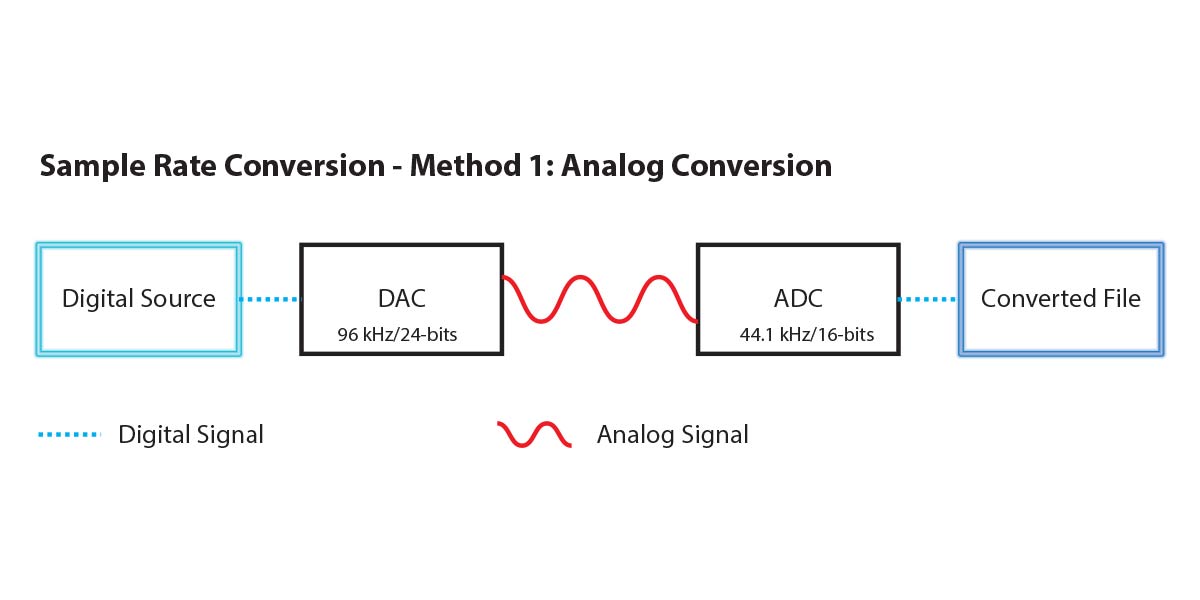Sample Rate Conversion Part III
Sample rate conversion can be done a number of different ways depending on the equipment that you have at your disposal. I’ll go through these methods next semester in my Advanced Audio Recording course…so pay close attention; this information might end up on a test!
1. Analog conversion – The audio that we purchase may be delivered via digital means (files or discs) but eventually is has to be converted back into analog form to be amplified and sent to an array of speakers or headphones so that we can hear it. So it’s not too hard to imagine that we can simply grab the line level analog signals coming from a preamplifier and reconvert them to digital using a different sample rate (and possibly word length). No matter what the sample rate of the original file was, the new file will follow the sample rate setting on the new ADC. See the diagram below:
Figure 1 – Sample Rate Conversion Method 1. The analog output of a DAC is sent to an ADC at another sample rate [Click to enlarge].
Speaking of tests…I routinely ask my students to identify the advantages and disadvantages of various methods of accomplishing tasks and this whole sample rate conversion unit provides a wonderful opportunity to discuss these with regards to this method.
What’s good about this type of conversion? Well, it can be done with no specialized hardware or fancy conversion hardware or software applications. You would want to make sure that you’re using the very best converters you could get a hold of AND have great quality clocks to drive them. Any degradation that occurs in this analog transfer will happen at the conversion stages…we’ll want it to be top notch.
However, this method is not without its perils. Once again we’re back to doing an analog conversion and as well saw recently judging the right analog amplitude to feed in to the new ADC is paramount. You don’t want to risk any clipping or leaving any bits unused to maximize your dynamic range.
It should go without saying…but I’ll say it anyway. There will no sonic or fidelity improvement by going from lower sample rates to higher sample rates. I can’t imagine why anyone would want to do this other than to see the 192 kHz light illuminated on their equipment…it means nothing in terms of the actual ultrasonic content of the new files. The maximum frequency of an existing digital file will not improve by simply converting to another file with a higher sample rate (or a longer word length for that matter). But we already know that.
Going the other way…from a high sampling rate to a lower sampling rate…does mean that you will be reducing the high frequency extension in the converted file. For example, if you have a great 96 kHz/24-bit file (you can try this with one of the free files available through this site) and convert is via a couple of digital to analog and analog to digital conversions, the ADC will inject a LPF in the signal path to ensure that there are no frequencies above the Nyquist frequency that might cause aliasing or foldover in the new file. The fidelity of the new file will be reduced compared to the original IF AND ONLY IF the original file actually contained some content above the Nyquist frequency of the ADC.
I’ll continue with the software method of accomplishing SRC tomorrow.


